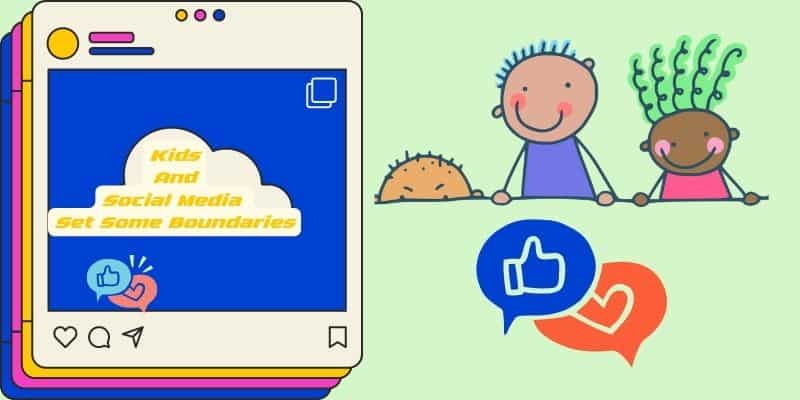Most parents think that social media take over their children’s lives and in many ways it is right. Platforms like TikTok, Instagram, Snapchat, etc are used to make new friends but parents are concerned about their children’s mental health that should they use social media at this small age.
A group of senators recently introduced legislation with the intention of banning the use of social media by all children under the age of 13. Users under the age of 18 would also need permission from a parent or guardian to set up an account. It is one of a number of proposals in Congress to make the Internet safer for kids and teenagers.
However, it takes time to make laws and regulate businesses. So in the meantime, it is parents’ responsibility to draw a certain line for safe access to the social media
Age 13 Rule
There is already a rule that prohibited the use of social media under the age of 13 Years. The Children’s Online Privacy Protection Act was enacted in 2000, long before the teenagers of today had even been born.
The objective was to protect children’s online privacy and get parental consent before collecting personal information about children. Although it is widely documented that children sign up for their services regardless, either with or without the permission of their parents.

Why Set Boundaries and Restrictions
Now, children’s online privacy is not only the issue, there’s harassment, bullying, the risk of bad eating habits, exposure to adult content, suicidal thoughts, and many awful things. These are some of the reasons why children require boundaries.
1. Safety
By setting limits parents can shield them from potential threats like identity theft, inappropriate content, cyberbullying, and online predators. By drawing certain lines, guardians can relieve these dangers and establish a more secure internet-based climate for their youngsters.
2. Positive Emotions
Children’s feelings of anxiety, low self-esteem, and negative comparisons can sometimes be heightened by social media. By setting boundaries you can assist to face the adverse effects of harmful substances, cyberbullying, or unnecessary social examination. Parents can support their children’s emotional well-being and promote a healthier digital experience by establishing boundaries.
3. Security of Personal Information And Privacy
Children learn about the value of privacy and responsible online sharing from boundaries. Children learn to protect themselves from potential dangers like identity theft and online scams by following guidelines about what personal information should not be shared and by encouraging privacy settings.
4. Establishing Communication And Trust
Parents and children can develop trust and maintain open lines of communication by setting boundaries. Parents show that they care about their children’s well-being by talking about and setting boundaries together. They also build trust and let kids talk to their parents when they have problems or worries online.

How To Set Boundaries
Now children only focus on gettings likes on Instagram, Facebook, Snapchat, etc and they can do anything to be on top. Setting limitations is essential for the safety and well-being of children to establish boundaries regarding their use of social media.
They should know how to block someone who is inappropriate towards them.
Here are some moves toward assisting you with laying out clear limits:
1. Communicating Openly
Discuss the advantages and disadvantages of social media with your child in an open and honest manner. Listen to what they have to say and what worries them, and then share your own worries as well. This discourse will establish the groundwork for defining limits cooperatively.
2. Together, RepresentThe Guidelines
Include your youngster in making the limits. Talk about what is and isn’t acceptable behavior, how much time they can spend on social media, and which platforms they can use. Guarantee they figure out the purposes of the principles.
3. Platforms Suited To A Person’s Age
Make educated choices regarding the social media platforms that are suitable for your child’s age. Take into consideration the privacy settings, content moderation, and safety features of the platform. Encourage young users to use platforms that have strong safety measures in place.
A young child is never suited to create an account on a dating app, gambling app, and any other adult site app.
4. Set Screen Time Limit
Your child’s ability to spend time on social media each day or week should be clearly defined. Work together to create a schedule that keeps online activities in balance with other important aspects of their lives, like homework, physical activity, and social interactions in person.
5. Place Where No Phone Allowed
Clear some specific areas or times in your home when smartphones or any smart devices are not allowed. For example, you can lay out no-gadget zones in rooms or during family dinners. These limits encourage to spend some quality time with family and friends.
6. Privacy And Sharing Rules
Teach your child the values of responsible sharing and privacy. Examine what sort of private data should not be shared on the web, like complete names, locations, or any personal details. Assist them with understanding the likely outcomes of oversharing and the significance of regarding others’ protection.
Teach them, how to lock their social media account or set the privacy to narrow the access to their account by any stranger.
7. Monitoring and Surveillance
Monitor your child’s activities on social media on a regular basis without invading their privacy. You can check which platform they are using, what they like, what they post, and who is in their friend lists.
This way you can take necessary action on time and protect your child from online predators.
8. Consequences of Breaking Guideline
Let them know the consequences of violating guidelines and give them a fair and reasonable punishment. You can reduce their screen time or temporarily restrict them from using smartphones.
Remember, your child is your responsibility and first you have to take action for their security not to depend on laws and rules.
Conclusion
So should we ban our children from using social media? Well, that is not the correct way to solve this problem. Like we said you have to talk with your children like a friend and explain to them the pros and cons of social media. Guide them on how can they use their accounts and if they find something inappropriate then immediately inform their elders so they can take strict actions against them.
It’s important for parents to understand that social media apps like Instagram, Facebook, Snapchat, etc are designed to be addictive. Without any strict rules and regulations, they push children or any users toward dangerous content. The companies are not interested in the well-being of children; they are interested in eyes on the screen and maximizing the number of clicks and increasing their popularity.
It is your duty to understand any potential threat and plan your defense to tackle the situation.
